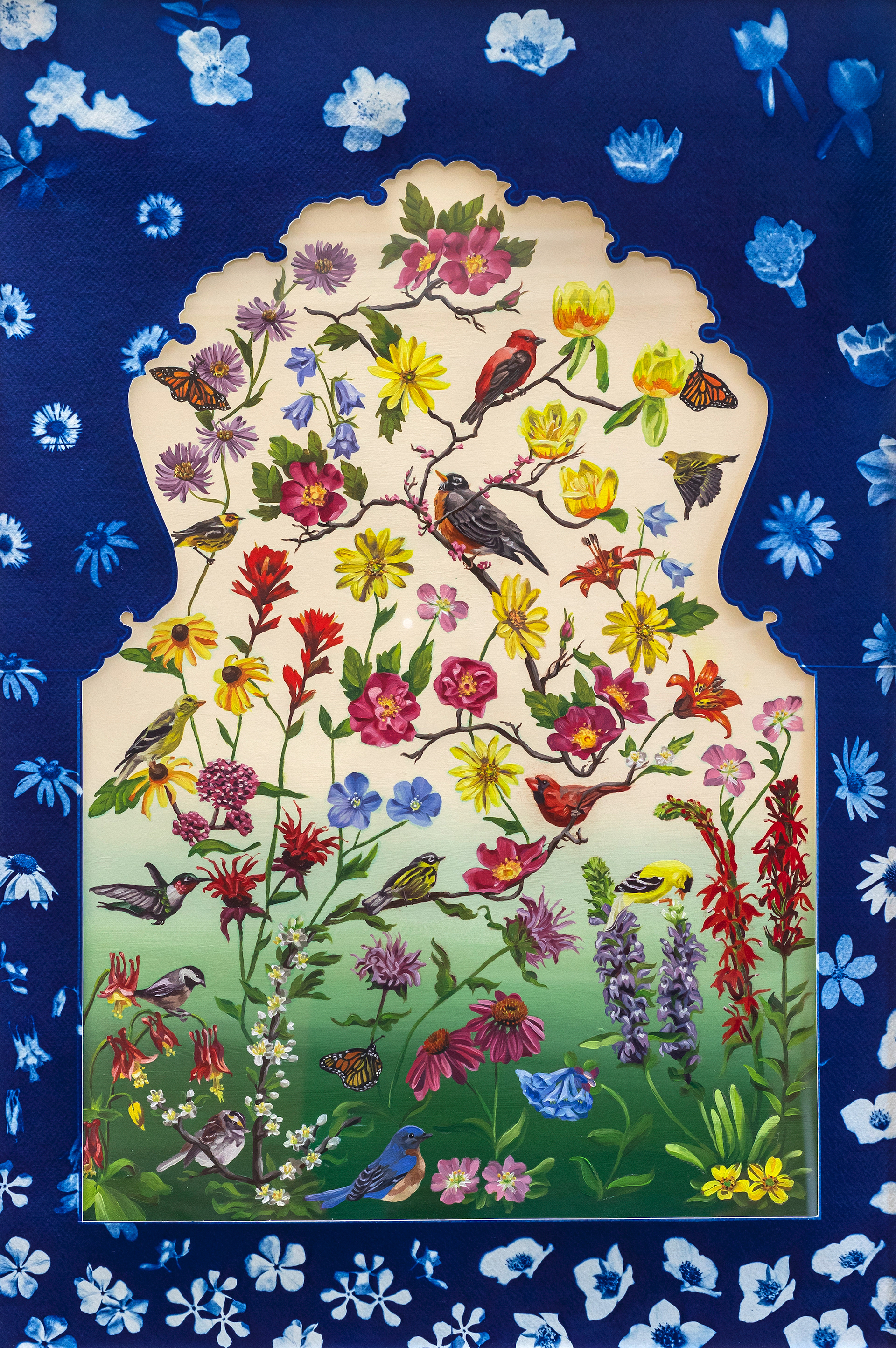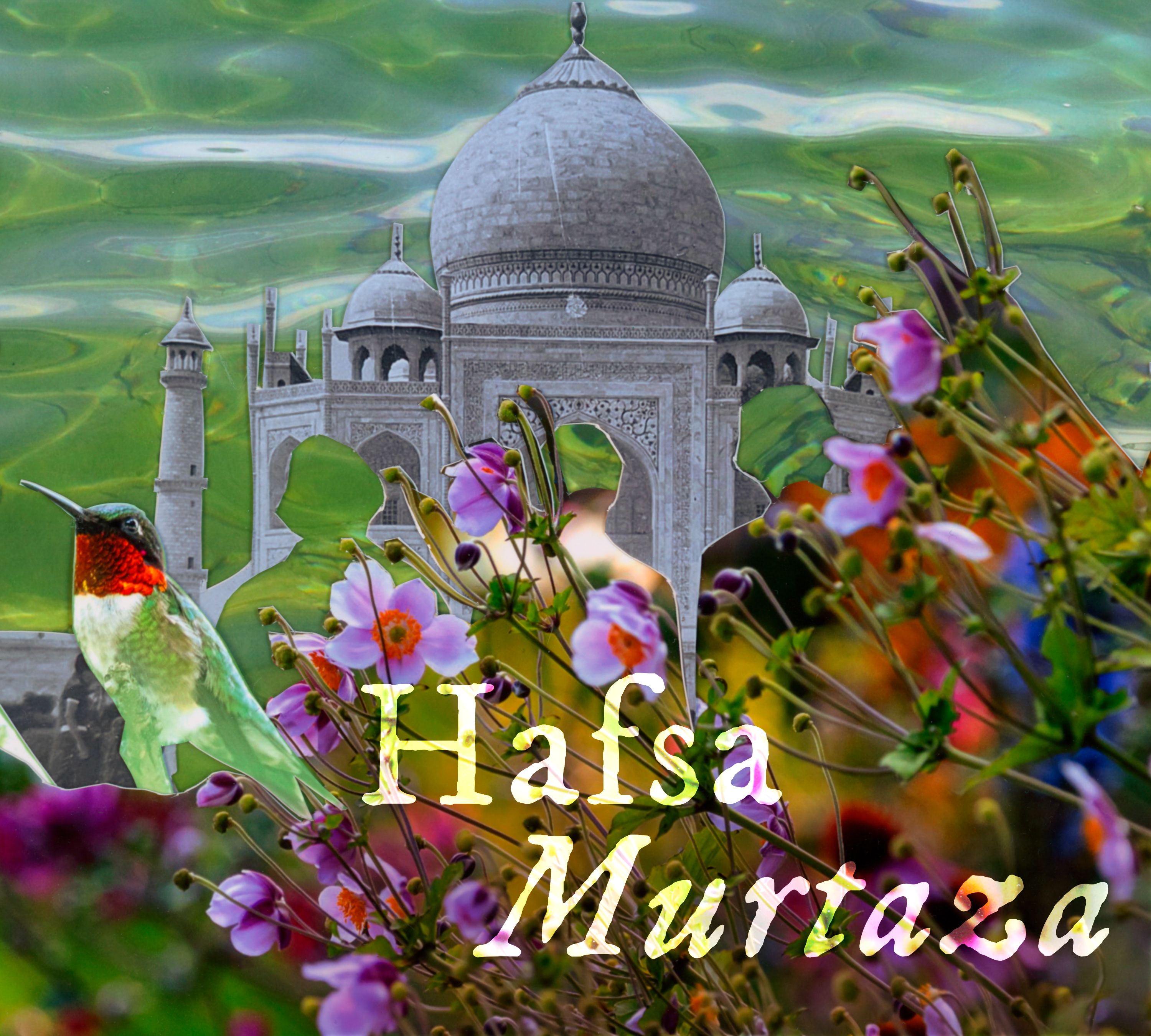Hafsa Murtaza, Islamic Window, 2024
Oil and acrylic on paper, cyanotype cutout frame.
16" x 24"
The painting Islamic Window into Eastern Canada reinterprets an Isfahani tilework by inserting Eastern Canadian birds and native flowers into an interlaced flat perspective design. The cyanotype border frame around the painting resembles an Islamic archway or window looking into the Canadian landscape, with ghostly exposure of native flowers seemingly falling down the frame in contrast to the painted design, where the flowers seem to be growing vertically on a single meandering branch. Islamic art, such as Persian miniatures, has flat perspectives with stacked horizons, contrasting Western linear perspectives and mimetic representations of reality. Flat perspective symbolizes the Islamic belief that Allah created the world with perfection while humans are inclined to make mistakes, which negates Islamic art from trying to replicate reality through a realistic perspective; instead, reality is presented through narrative and material specificity. By depicting the flora and fauna of Eastern Canada through an Islamic perspective, I wish to present a nuanced interpretation of the Canadian landscape through the gaze of the Canadian Muslim population.
Hafsa Murtaza, Islamic Window, 2024
Oil and acrylic on paper, cyanotype cutout frame.
16" x 24"
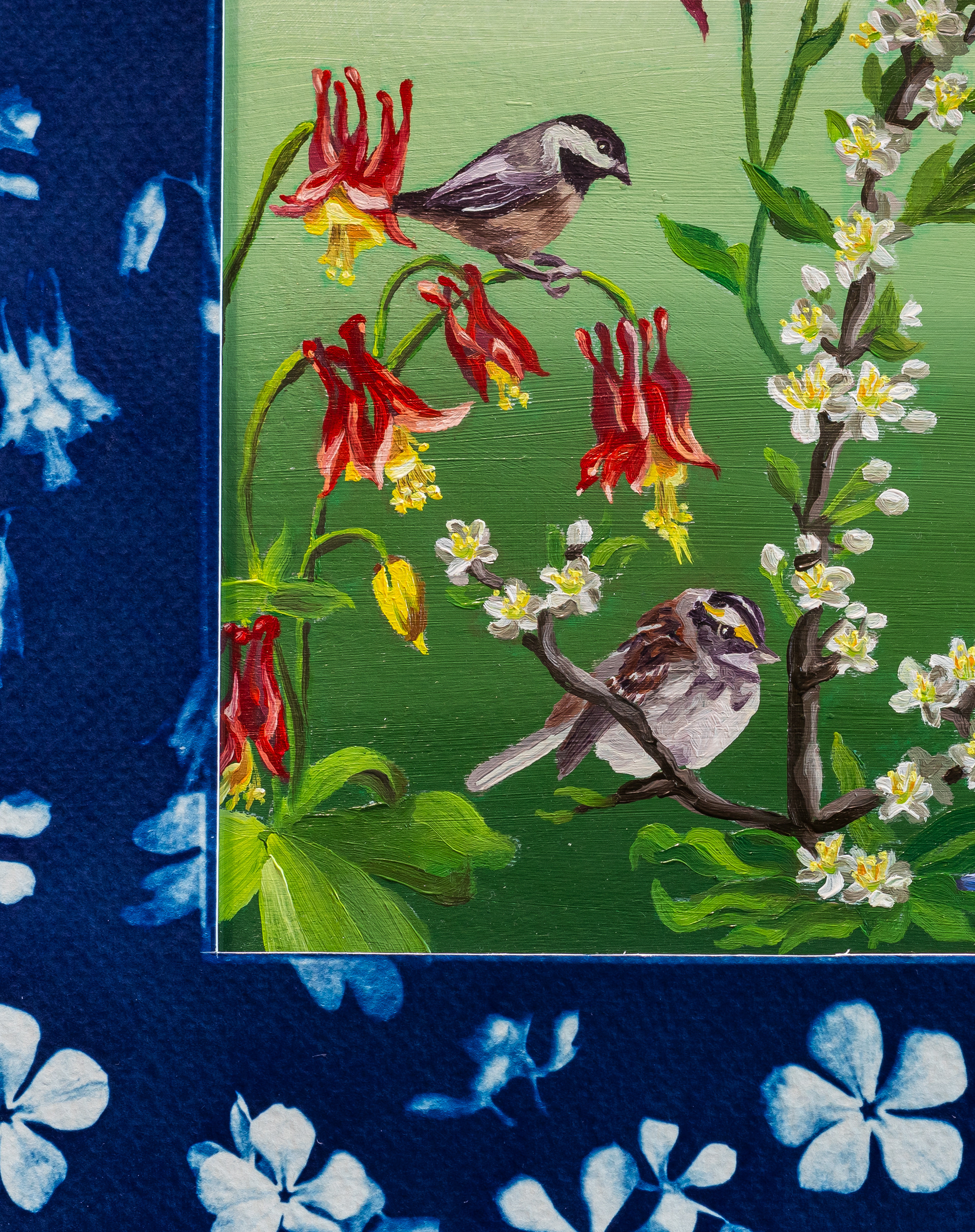
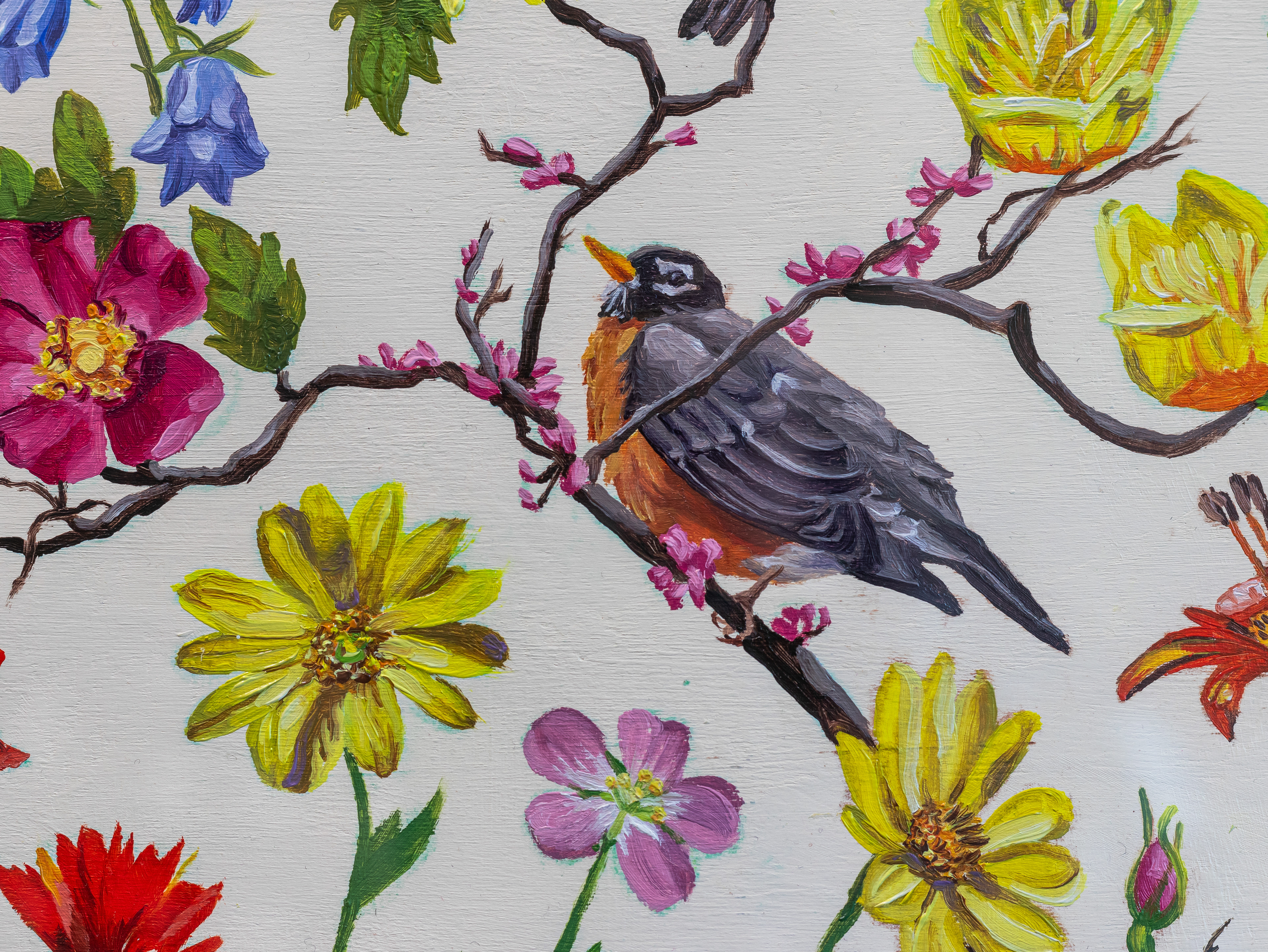
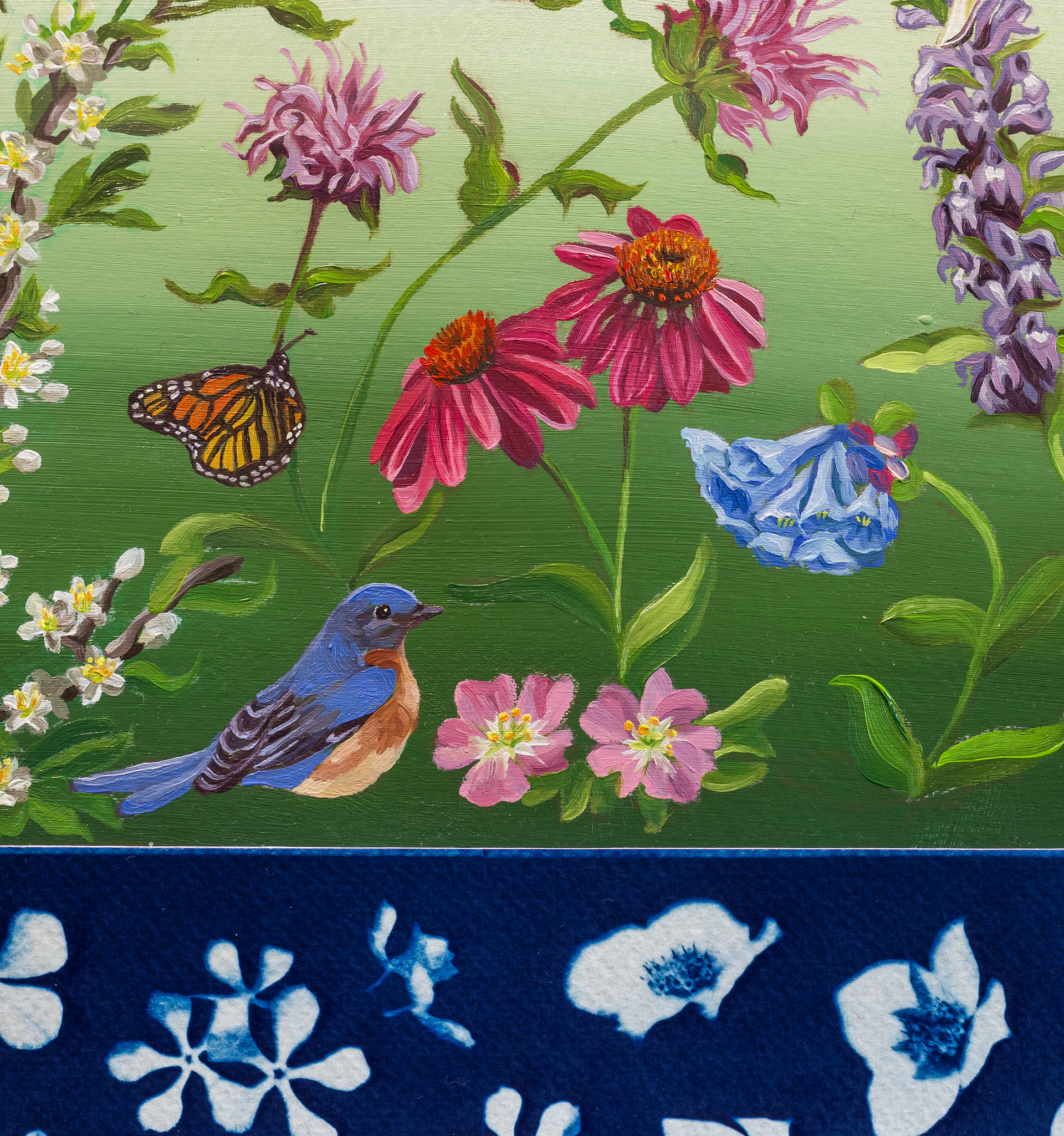
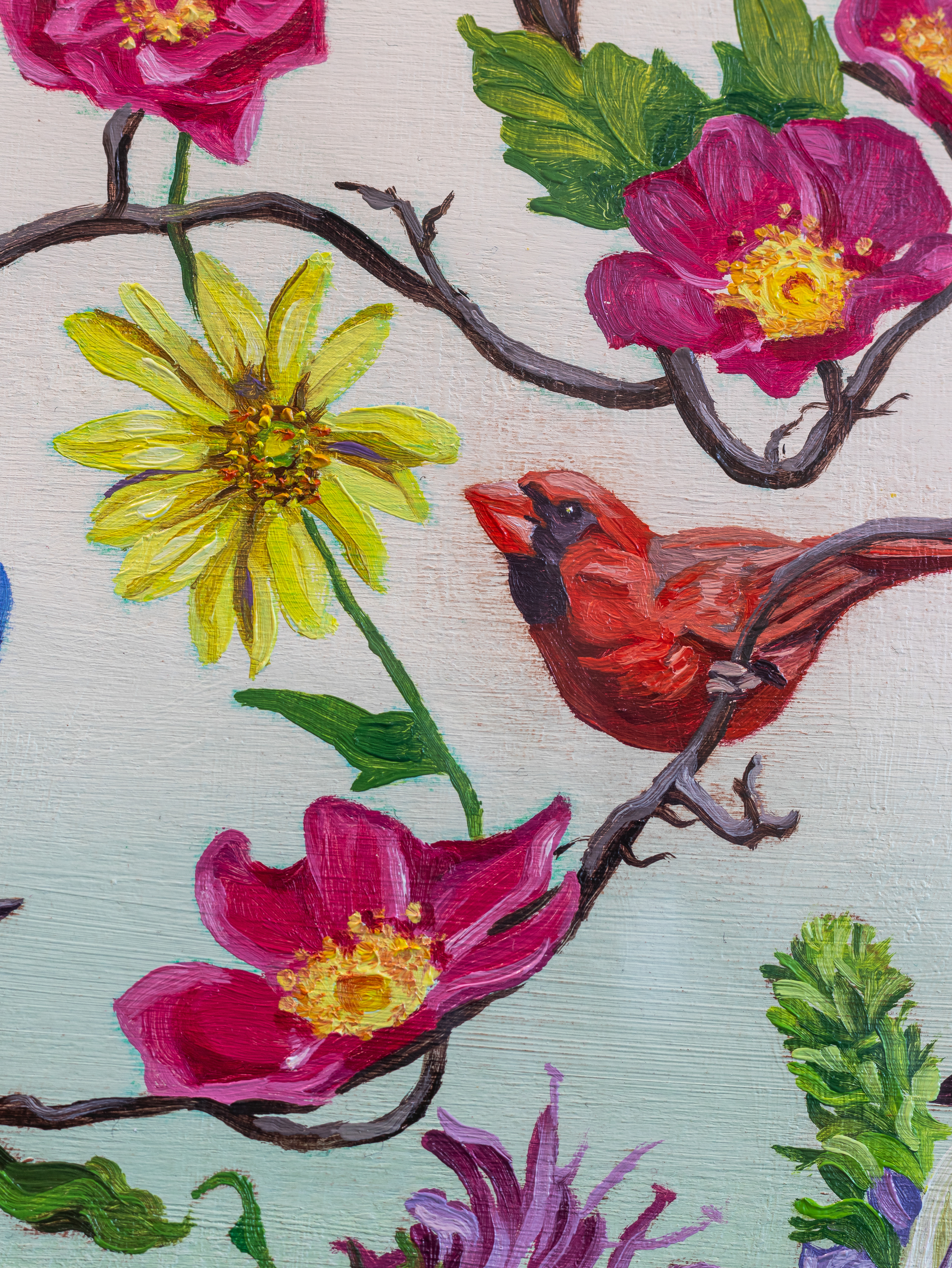

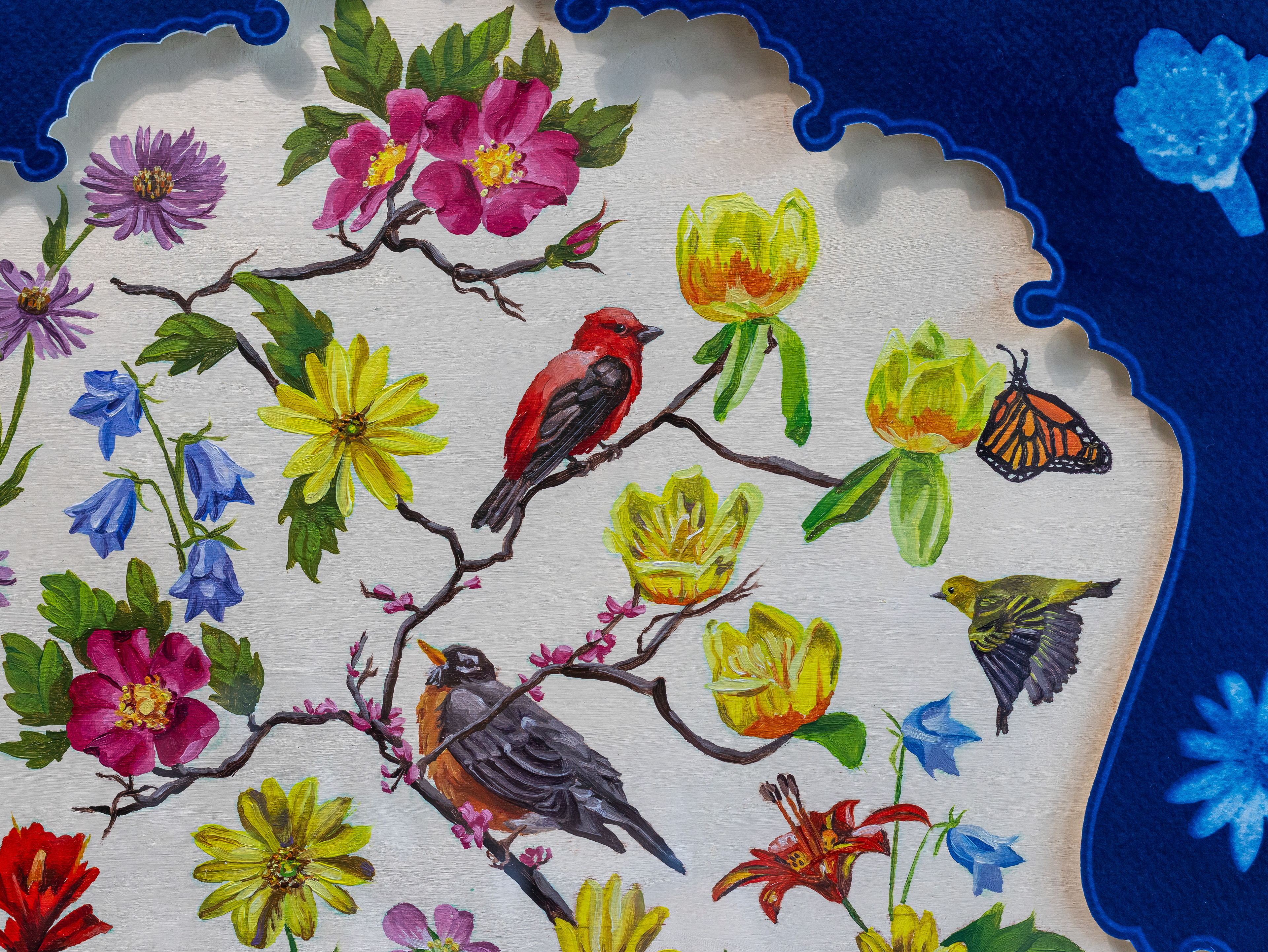
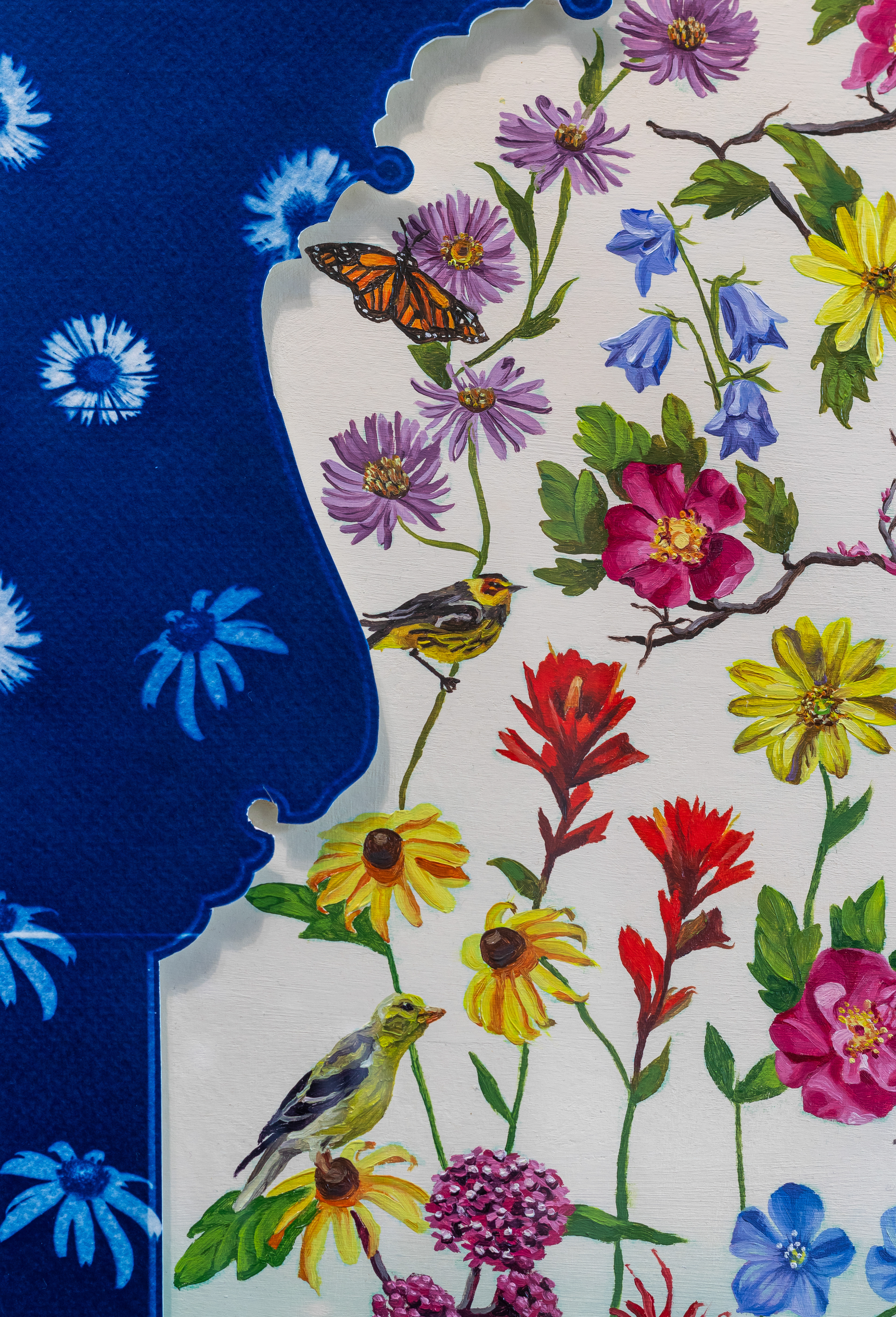
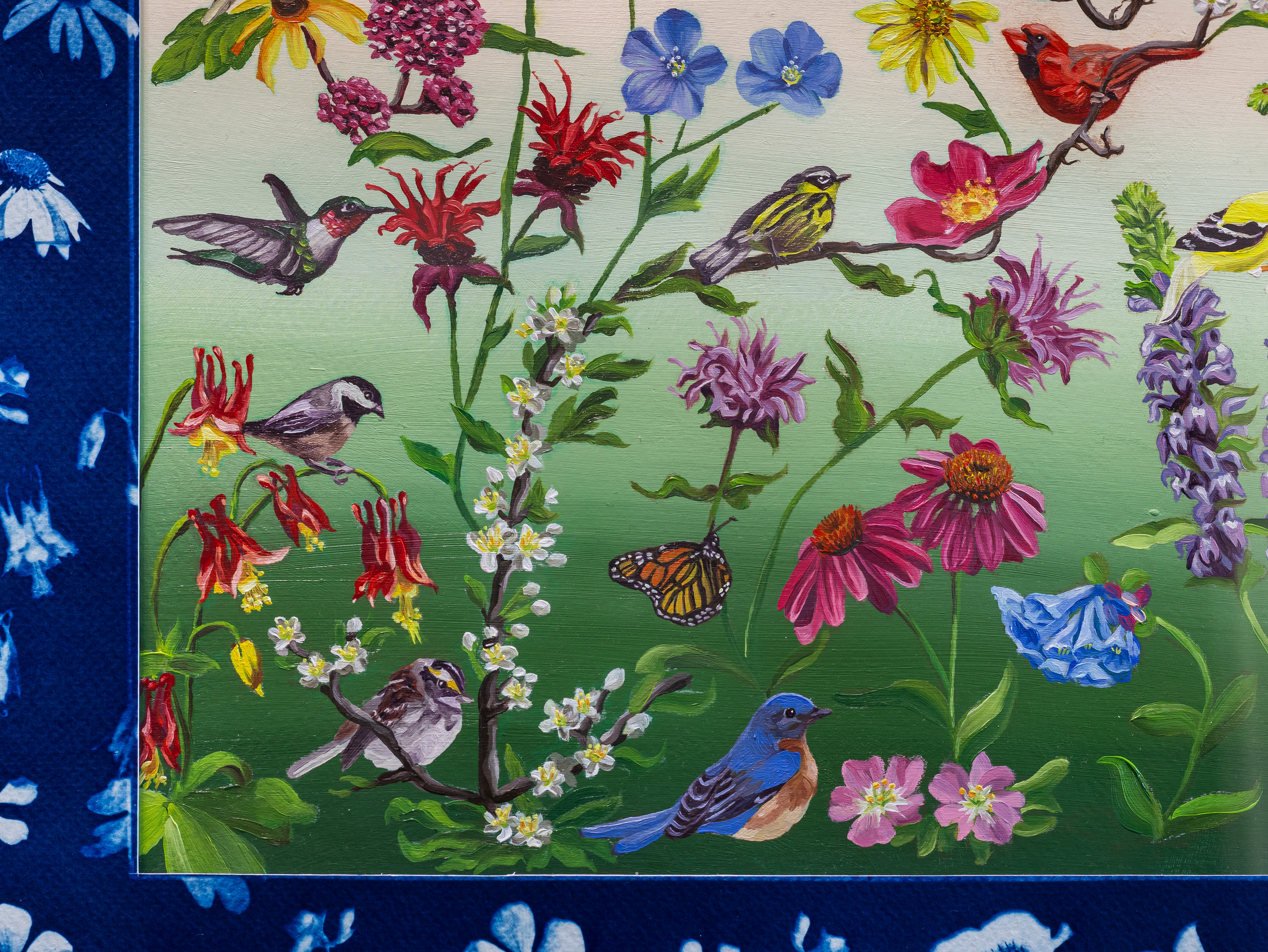
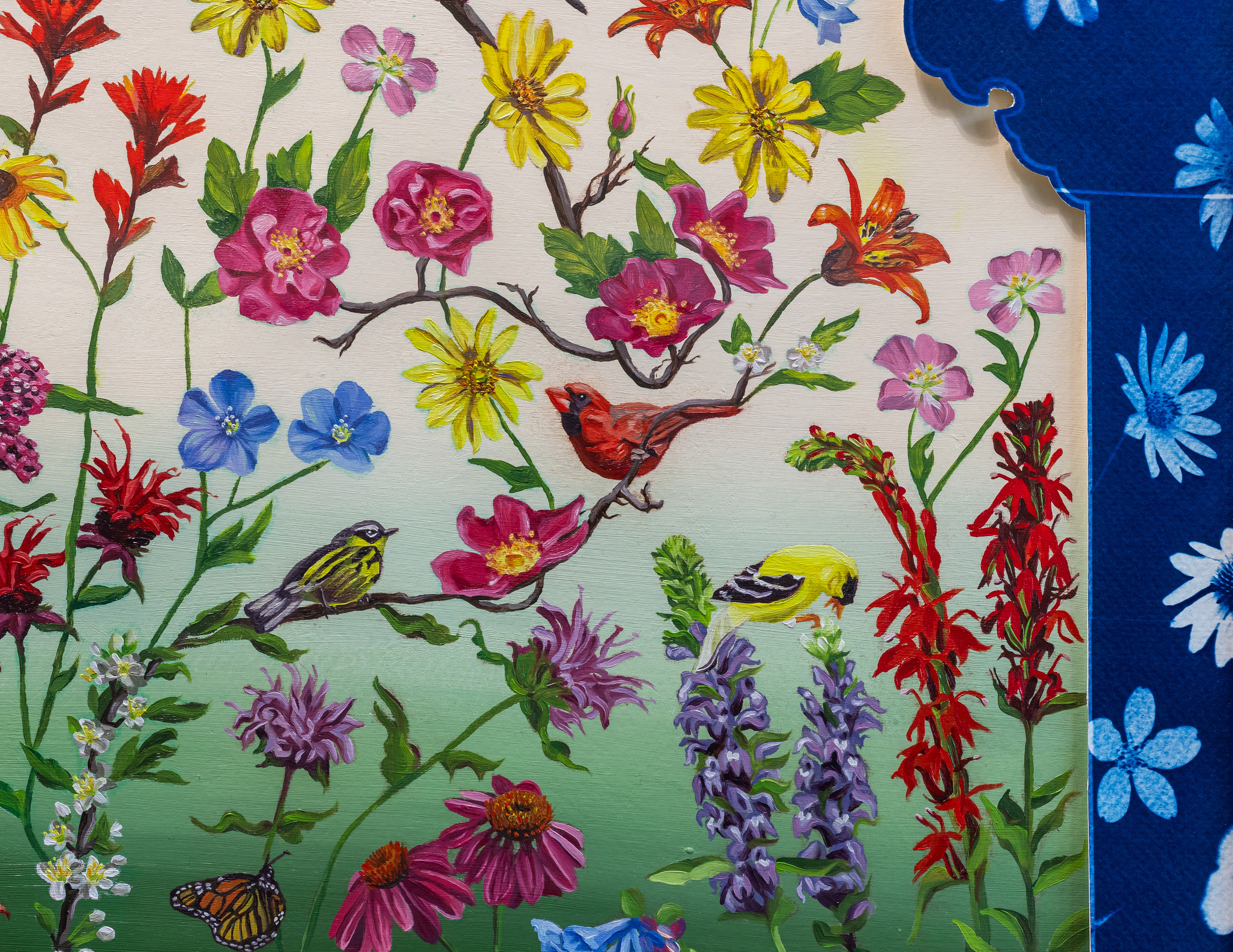
I used my bird photography images to illustrate the various birds in the paintings, including resident birds like American Robins, Northern Cardinals, Chickadees and American Goldfinches, as well as spring migrant species I photographed at Rondeau Provincial Park such as warblers, the Scarlet Tanager and Eastern Bluebird. Most of the flowers shown are grown in my garden, though I also decided to depict native flowers not found in my garden as a reminder of which species I have yet to plant.
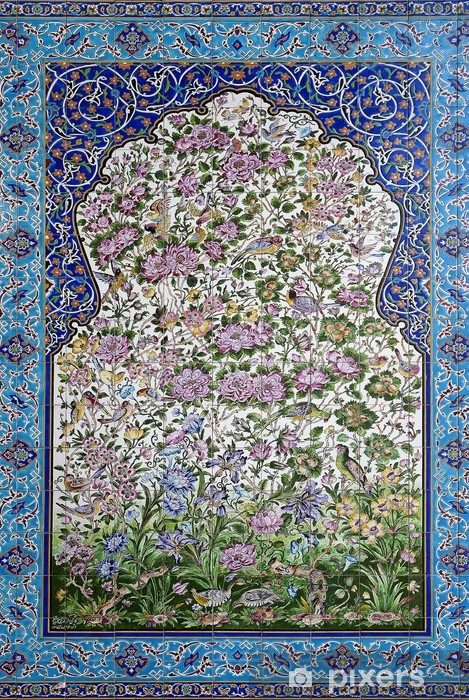
Isfahan Iran Ottoman Style Floral and Fauna Tiles
